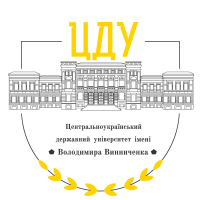LINGUOPRAGMATIC FEATURES OF CULINARY VIDEO RECIPE HEADLINES (BASED ON THE MATERIAL OF UKRAINIANLANGUAGE YOUTUBE BLOGS)
DOI:
https://doi.org/10.32782/2522-4077-2024-208-12Keywords:
blogger, video recipe, headline, viewer, pragmatics, YouTube blogAbstract
The article is devoted to the analysis of linguistic and pragmatic features of video recipe headlines of Ukrainianlanguage culinary YouTube blogs. Particular attention is paid to the structural and semantic organisation of headlines in video recipes. The direct object of the study is the headlines of video recipes of modern Ukrainian-language culinary YouTube blogs – «Zakarpatska hospodynia», «Yevhen Klopotenko», «Lilia Tsvit», «Nashi besahy» and some others. The material for the study was 460 headlines selected through the method of continuous sampling. An important role in the study is played by the description of the pragmatics of the headlines. The article analyses the lexical and semantic groups of video recipe headlines, in particular, the study of headlines for the use of a number of stylistic figures by bloggers. An important place is given to the means of expressing video recipe headlines. Special attention is also paid to the structural organisation of this component of a YouTube blog. The headline in video recipes is the element that connects the author and the viewer on the YouTube video platform. Each headline presents the video blog author's knowledge, experience, perception of the host's world, understanding of the audience, etc. to the audience. When creating a video of cooking a dish, a blogger consciously chooses specific language signs to influence the audience. To achieve this goal, lexical, semantic and stylistic, morphological and syntactic means are required. It has been found that the following features are important for video recipe titles: informative, concise, accurate, clear, clichéd and expressive. In order to attract the attention of the viewer audience, video bloggers use colloquial and borrowed vocabulary, phraseology, various types of repetition, place names, dialects, metaphors, epithets, etc. in their video recipe titles. Structurally, the titles are presented through the use of different types of simple and complex sentences by video bloggers. Each analysed video recipe headline is formed with the help of multi-level linguistic means, combining several lexical and grammatical features aimed at attracting the attention and interest of the audience.
References
Антонович М. М. Функції газетних заголовків, виражених сполученням типу NNN. Іноземна філологія. 1992. № 103. С. 103–110.
Деркач Л. А. Риторичні функції газетних заголовків. Типологія та функції мовних одиниць: наук. журн. / редкол.: Н. М. Костусяк (гол. ред.) та ін.; Східноєвроп. нац. ун-т ім. Лесі Українки. Луцьк, 2014. № 1. С. 76–85.
Євграфова А. О. Заголовок як актуалізатор текстової інформації. Стиль і текст: зб. наук. ст. / за ред. В. В. Різуна; Ін-т журналістики КНУ імені Тараса Шевченка. Київ, 2003. № 4. С. 141–147.
Зайцева В. В. Функції газетного заголовка. URL: http://surl.li/prfpg (дата звернення: 26.01.2024).
Збіглей І., Мусурівська О. Стилістичні особливості заголовків у публіцистичному та науковому стилях. Науковий вісник Чернівецького університету. Серія «Германська філологія». 2015. №751. С. 79–86.
Коваленко А. М. Заголовок англомовного журнального мікротексту-повідомлення: структура, семантика, прагматика (на матеріалі тижневика Newsweek): дис. канд. філол. наук: 10.02.04 / Київський національний лінгвістичний ун-т. Київ, 2002. 187 с.
Нечаюк І. О. Функціонально-стилістичні особливості заголовків англомовних новинних медіатекстів політичного дискурсу. Науковий вісник Херсонського державного університету. Серія: Перекладознавство та міжкультурна комунікація. 2016. Вип. 5. С. 27–30.
Пердейчук Т. І., Садовник-Чучвага Н. В. Семантико-стилістичний аналіз заголовків англомовних статей про Україну. Наукові записки Національного університету «Острозька академія». Серія «Філологічна». 2014. Випуск 44. С. 226–229.
Ревенко В. Прагматичні особливості заголовків сучасних британських і американських інтернет-видань. Південний архів. Філологічні науки. 2018. Вип. 73. С. 125–129.
Савчук І. С., Стрюк Н. В. Структурно-граматичні особливості заголовків в англійськомовному публіцистичному дискурсі (на матеріалі видання «National Geographic»). Вісник студентського наукового товариства Донецького національного університету імені Василя Стуса. Сер.: Філологія. 2022. Вип. 14. Том 1. С. 185–188.
Фадєєва О. В. Функції та засоби прагматизації газетних заголовків. Науковий вісник Міжнародного гуманітарного університету. Сер.: Філологія. 2017. №27. Том 2. С. 135–139.
Цимбаліста М. М., Котвицька В. А., Лазебна О. А. Структурно-семантичне наповнення й комунікативно-прагматичні характеристики новинних заголовків сучасної німецькомовної преси. Науковий вісник Міжнародного гуманітарного університету. Сер.: Філологія. 2019. № 41. Том 2. С. 101–105.
Юлдашева Л. П. Лексико-семантичні особливості заголовків сучасної літератури. Вісник Донецького національного університету. Серія Б: Гуманітарні науки. Вінниця: ДонНУ ім. Василя Стуса, 2015. № 1–2. С. 327– 331.
Юлдашева Л. П. Структурно-семантичні та прагматичні особливості заголовків художніх творів кінця XX – початку XXI ст.: дис. канд. філол. наук: 10.02.01. Черкаси, 2018. 271 с.
Kintsch W. S. The role of rhetorical structure in text comprehension / W. S. Kintsh, J. Yarborough. Journal of Educational Psychology. 1982. Vol. 74, № 6. P. 828–834.








